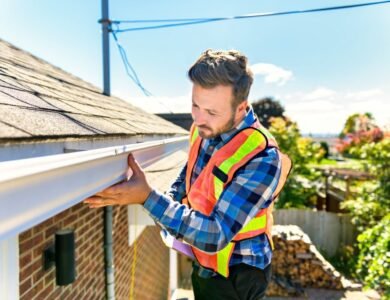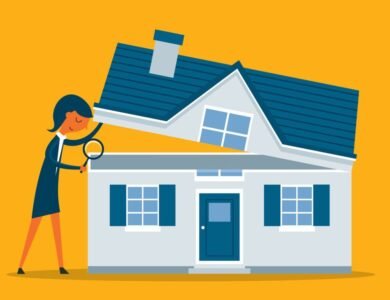Austin Home Inspection Services Explained: The Full Homebuyer Checklist

Buying a home is an exciting journey, but it can also be a bit overwhelming. One crucial step in this process is getting a home inspection. If you’re in the Texas capital, you’ll want to familiarize yourself with Austin home inspection services. This comprehensive guide will walk you through everything you need to know about home inspections in Austin, helping you make informed decisions as you embark on your homebuying adventure.
What Are Home Inspection Services?
Before we dive into the specifics of Austin’s home inspection landscape, let’s start with the basics. Home inspection services involve a thorough examination of a property’s condition. A qualified inspector will assess various components of the home, from the foundation to the roof, and provide a detailed report of their findings.
Why Are Home Inspections Important?
Home inspections are crucial for several reasons:
- They reveal potential issues that might not be visible to the untrained eye.
- They help you understand the true condition of the property you’re considering.
- They can save you money in the long run by identifying problems early.
- They provide leverage for negotiations with the seller.
- They give you peace of mind about your investment.
The Austin Home Inspection Process
Now that we understand the importance of home inspections, let’s explore how Austin home inspection services typically work.
Scheduling the Inspection
Once you’ve found a home you’re interested in, you’ll want to schedule an inspection as soon as possible. In Austin’s competitive real estate market, it’s wise to have an inspector lined up before you make an offer. This way, you can move quickly once your offer is accepted.
The Inspection Day
On the day of the inspection, the process usually takes about 2-3 hours, depending on the size and condition of the home. It’s a good idea to be present during the inspection if possible. This allows you to ask questions and get a firsthand understanding of the home’s condition.
The Report
After the inspection, you’ll receive a detailed report. This document is your roadmap to understanding the home’s condition and will be invaluable as you move forward in the purchasing process.
The Full Homebuyer Checklist: What’s Included in an Austin Home Inspection?
Now, let’s break down what’s typically covered in Austin home inspection services. This checklist will help you understand what to expect and what questions to ask.
1. Foundation and Structure
Austin’s soil can be challenging for foundations, so this is a crucial area of inspection. The inspector will look for:
- Signs of settling or shifting
- Cracks in the foundation
- Evidence of water damage or poor drainage
2. Roof and Attic
Given Austin’s hot summers and occasional severe weather, the roof’s condition is paramount. The inspector will check:
- Shingle condition and age
- Proper ventilation
- Signs of leaks or water damage
- Condition of gutters and downspouts
3. Electrical Systems
Electrical issues can be both dangerous and expensive to fix. The inspection will cover:
- The condition of the main electrical panel
- Proper wiring throughout the home
- Functioning of outlets and switches
- Presence of GFCI outlets in appropriate areas
4. Plumbing
Plumbing problems can lead to significant damage if left unchecked. The inspector will examine:
- Water pressure and flow
- Condition of pipes
- Proper drainage
- Water heater function and age
5. HVAC System
In Austin’s climate, a functioning HVAC system is essential. The inspection will include:
- Age and condition of the unit
- Proper cooling and heating function
- Condition of ductwork
- Filter cleanliness
6. Windows and Doors
These elements affect both energy efficiency and security. The inspector will check:
- Proper operation of windows and doors
- Presence of double-pane windows
- Signs of water intrusion
- Condition of weather stripping
7. Interior
The interior inspection covers a wide range of elements, including:
- Walls, ceilings, and floors
- Staircases and railings
- Built-in appliances
- Smoke and carbon monoxide detectors
8. Exterior
The outside of the home is just as important as the inside. The inspection will cover:
- Siding or exterior wall condition
- Grading and drainage around the foundation
- Condition of decks, patios, or porches
- Driveway and walkway condition
9. Garage
If the home has a garage, the inspector will check:
- Door operation and safety features
- Wall and ceiling integrity
- Proper fire separation between the garage and living spaces
10. Pest Inspection
While not always included in standard Austin home inspection services, a pest inspection is highly recommended. This will check for:
- Signs of termites or other wood-destroying insects
- Evidence of rodents or other pests
- Conditions that might attract pests
Understanding Your Inspection Report
After the inspection, you’ll receive a comprehensive report. Here’s how to make the most of this valuable document:
Prioritize Issues
Not all problems are created equal. Focus on major issues that affect safety, structural integrity, or will be expensive to repair.
Get Estimates
For any significant issues, get estimates from contractors. This information can be useful in negotiations with the seller.
Consider Future Maintenance
Some items may not be immediate problems but could require attention in the near future. Factor these into your decision-making process.
Ask Questions
Don’t hesitate to ask your inspector for clarification on any points in the report. They’re there to help you understand the home’s condition.
Beyond the Standard Inspection
While a general home inspection covers a lot of ground, there are some additional inspections you might consider, especially in Austin:
Pool Inspection
If the home has a pool, a separate inspection by a pool specialist is advisable.
Sprinkler System Inspection
Given Austin’s water conservation efforts, ensuring the efficiency of the sprinkler system is important.
Tree Inspection
Austin’s beautiful trees can sometimes cause issues with foundations or roofs. A certified arborist can assess the health and potential risks of trees on the property.
Sewer Line Inspection
Older homes may benefit from a sewer line inspection to check for root intrusion or other issues.
Choosing the Right Inspector
The quality of your home inspection depends largely on the inspector you choose. Here are some tips for selecting the right professional:
- Check for proper licensing and certifications.
- Look for inspectors with experience in Austin’s specific housing types and climate challenges.
- Read reviews and ask for references.
- Ensure they carry errors and omissions insurance.
- Choose an inspector who encourages you to be present during the inspection.
What Happens After the Inspection?
Once you have your inspection report, you have several options:
- Move forward with the purchase if you’re satisfied with the home’s condition.
- Request repairs or credits from the seller based on the inspection findings.
- Walk away from the deal if major issues are discovered and you’re not comfortable proceeding.
Remember, the purpose of the inspection is to inform you about the home’s condition, not to provide a pass/fail grade.
Final Thoughts
Home inspections are a vital part of home buying, especially in a dynamic market like Austin. By understanding what to expect from Austin home inspection services and how to use the information they provide, you’re setting yourself up for a smoother, more informed homebuying experience.
Remember, while the inspection process might seem daunting, it’s ultimately there to protect you and your investment. Take the time to choose a reputable inspector, be present during the inspection if possible, and carefully review the report. With this knowledge in hand, you’ll be well-equipped to make the best decision about your potential new home in the vibrant city of Austin.






